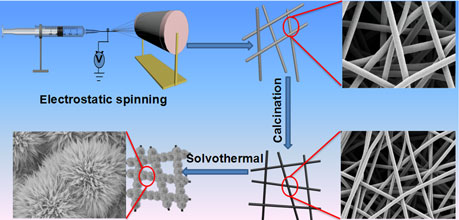No CrossRef data available.
Published online by Cambridge University Press: 01 March 2017

The novel Three-dimensional rambutan-like NiCo2O4 microspheres have been successfully coated onto surface of carbon nanofibers (CNFs) to form NiCo2O4–CNFs hybrids. The composition and microstructure of NiCo2O4–CNFs were characterized by the field-emission scanning electronmicroscopy, x-ray photoelectron spectroscopy, transmission electron microscopy, and x-ray diffractometer. The obtained NiCo2O4–CNFs exhibited a specific capacity of 160 mAh/g at 1 mA/cm2 in 2 M potassium hydroxide aqueous solution. The specific capacity gradually increases with the increasing of cycles; and after 3000 cycles, the specific capacity still can be remained over 90%.